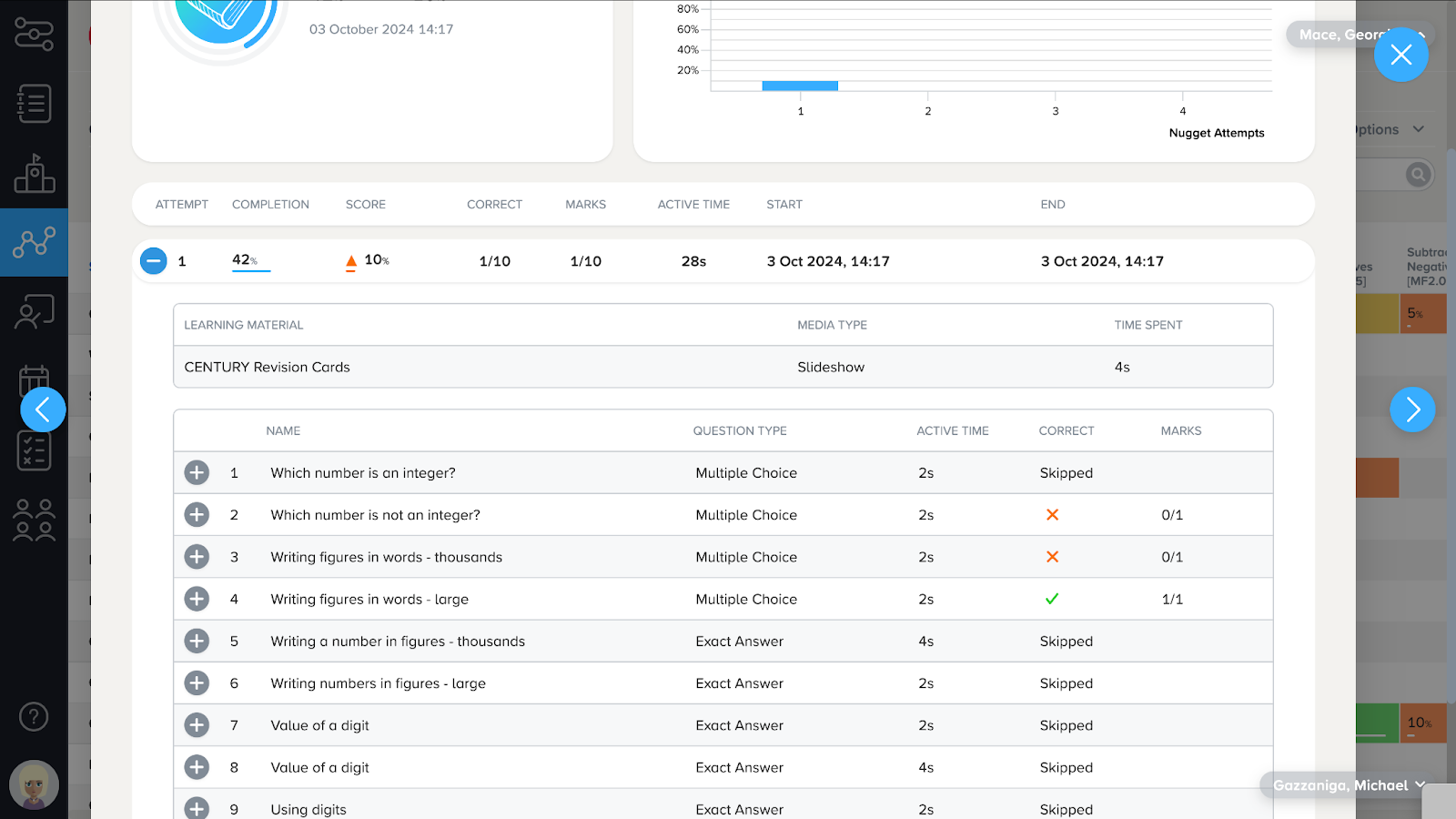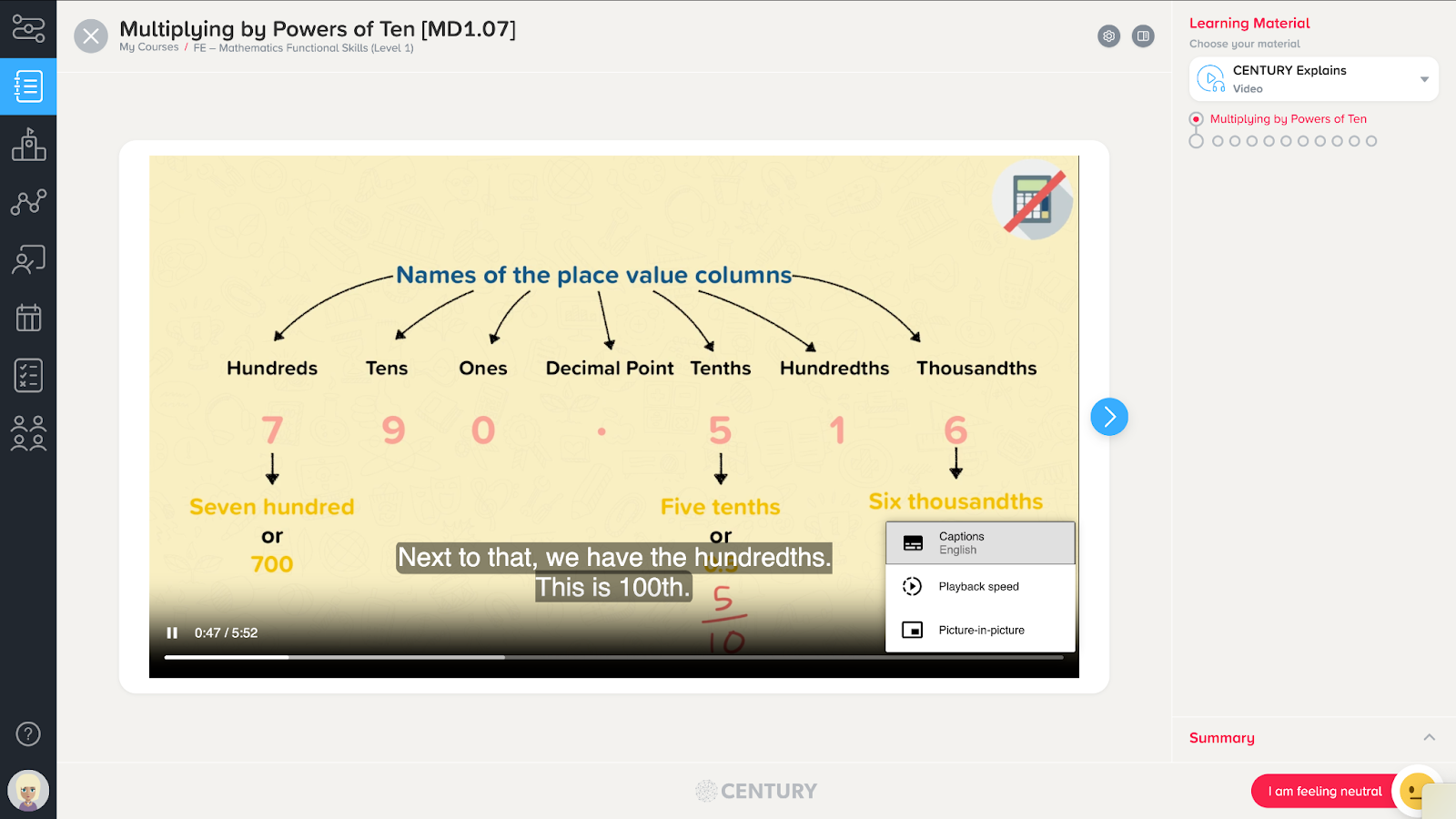Teaching good learning habits on CENTURY in Further Education
Estimated reading time: 4 minutes
Our very own Taryn Davison, a former primary school teacher and now a member of our Customer Success team, went back into the classroom last year to see what it was like to integrate CENTURY into her teaching practice. She wrote up her findings in a series of blogs entitled ‘Confessions of a CENTURY Teacher’.
Her insights, especially around how to train learners to use the platform effectively, have been real game changers for how we talk to our schools and colleges for preparing their learners to get the most out of the CENTURY. In this post, Lily McIntosh, one of our Senior Account Managers, writes how the introduction of CENTURY to learners can be adapted to an FE context.
Supporting learners in developing effective study habits is essential for success in Further Education (FE), especially when they need to maximise their progress in such a short space of time. CENTURY provides an excellent platform to encourage independent learning and help students take ownership of their progress. Here are some key strategies to reinforce good learning habits within an FE setting.
1. Watching the videos effectively
Tracking Engagement:
Show learners that their video-watching activity is tracked and visible to the teacher in the Teacher Dashboard. This can incentivise them to engage fully with the instructional content.

Enhancing Focus:
Encourage students to use headphones and apply subtitles to improve concentration and comprehension. This is an especially helpful strategy for EAL learners.

Optimising Viewing:
If learners are viewing the videos on a phone, advise them to watch videos in landscape mode for a better viewing experience, and bring headphones to lessons with them.
2. Setting expectations and launching CENTURY
Setting Targets:
Aim for at least three nuggets per week per subject. Over 33 weeks, this equates to approximately 100 nuggets per subject. Our research project with Ufi VocTech showed that students who use CENTURY to revise for as little as 10 minutes a week improved their results twice as much as the national average. Whilst those who used CENTURY to revise for over one hour a week saw improvements in their maths GCSE results of over 10 times the national average.
Maximising Study Hours:
Set time targeted expectations on CENTURY such as 40 hours of learning annually. Over 33 weeks, this equates to approximately 1 hour 20 minutes a week on CENTURY. This could be done during tutor time in computer rooms or on mobiles.
Accurate Diagnostics:
Encourage students to only select ‘I don’t know’ in diagnostics when they genuinely do not know the answer. This helps to ensure that the learner pathway is a genuine reflection of their gaps in knowledge and where they need to be challenged.
Maths Readiness:
Before beginning the maths diagnostic, show learners how to use the maths keyboard using this help page article for support
3. Engaging with the content
Maximising Understanding:
Learners should watch the entire video or spend at least five minutes on the slides to absorb key concepts.
SPaG Focus:
A lot of our colleges report successful engagement using CENTURY during tutor time and focussing on SPaG nuggets.
Encouraging Ownership:
Direct students to their Student Dashboard to monitor progress and take responsibility for their learning.
Preparation for Exams:
Once students have identified the areas they need to work on in their Dashboard, they can use the ‘My Courses’ tab to access the relevant nuggets and focus their revision as exams approach.
4. Reward Systems and Competitions
In FE, many learners may not pass their exams immediately, so incremental improvements are key. As such, we recognise that progress looks different for every learner. Some may be striving for smaller grade improvements (e.g., moving from Grade 2 to 3), while others aim for higher grades (Grade 4 or 5). As such, even a small percentage increase can represent significant progress for learners, which can be taken into account when setting targets and implementing competitions.
Tracking Progress:
Reward learners who complete the most nuggets with an average score above a set threshold. Follow your college’s reward policy or do what some of our colleges do and host pizza parties or offer free lunches.
Recognising High Achievement:
Acknowledge the highest-scoring students to promote motivation either during tutor time or through displays around college.
Recognising Personal Achievements:
Reward learners who have met their own personal goals on CENTURY
Class and Subject Competitions:
Where possible, introduce friendly competition within subjects or tutor groups to encourage participation.
Takeaways
By embedding these strategies into daily teaching practice, FE educators can help students build resilience, engage more effectively with their learning, and develop habits that will support their long-term academic and professional success. Encouraging structured engagement, setting realistic goals, and fostering a culture of independent learning will ensure students make meaningful progress with CENTURY.
To learn more about how to embed CENTURY in your college, book a demo here. If you are already an existing CENTURY customer, get in touch with your Account Manager or email fesupport@century.tech
CENTURY in the news
View all News
-

Blog
1st December 2025
The Critical Edge: Why Precision of Language Secures Your Exam Success
Clear, accurate scientific language can make the difference between grade boundaries. This article explores the most common mistakes students make in biology, chemistry and physics exam answers.
Read more
-

Blog
28th November 2025
Supporting Every Learner: How the CENTURY Wellbeing Tool Helps Schools Understand…
Discover how the research-backed CENTURY Wellbeing Tool helps schools measure and track student wellbeing, helping to improve engagement and achievement.
Read more